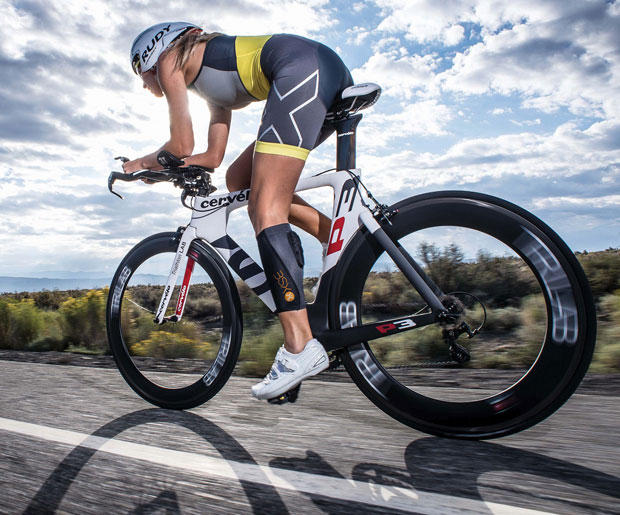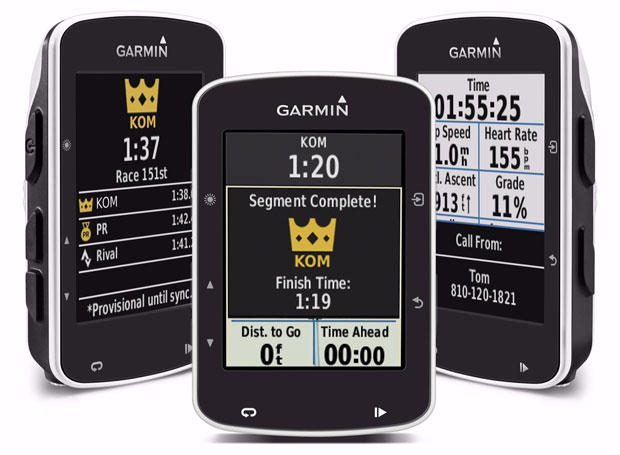A BSX Insight Gen 2 first look
We had the opportunity to test the BSX Insight Gen 2 model and when compared to the original model they added real-time muscle oxygenation, improved connectivity, the ability to broadcast to other devices, and Kickr integration. We now will look at what is the same and what is different.
Appearance
Owners of the Gen 1 model will be hard pressed to find much of a difference between the two models. As you can see from the image below, the device itself remains mostly unchanged.
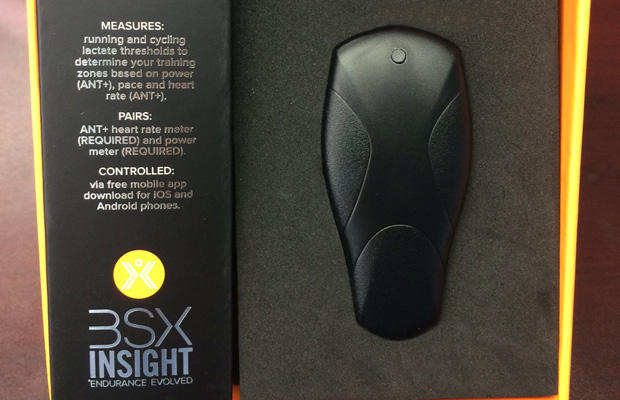
The calf sleeve is a bit larger so it will better block out light as well as survive daily use/sweat, but it is not waterproof.
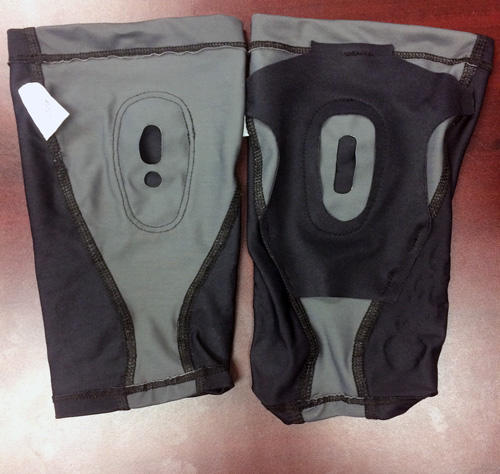
Connectivity
If the Gen 1 model had any significant issues, it was users having problems connecting to their peripheral devices. I noted this in my review of the Gen 1 model, as well as some troubleshooting recommendations to improve the process. A number of software updates helped to correct this issue, but it never worked perfectly.
The Gen 2 model corrected these issues and more. I was able to pair my Gen 2 model to my Garmin and Mio HR device and Garmin foot pod, as well as my Wahoo Kickr, Powertap P1, Quarq, and Pioneer power meters. The pairing was flawless across the board and I was able to do so while wearing the BSX Insight, unlike with the Gen 1 model. The device also quickly picked up paired sensors after a dropped connection. I purposely disconnected sensors during use (e.g., unplugged Kickr, turned off HR sensor, ran battery dead on BSX device), and on each occasion once the sensor became available it immediately re-connected. This is due in part to an update to the BSX software where it now remembers the last paired sensor for faster connection, along with improved Ant+ connectivity within the device.
One thing to keep in mind is that a user may need to give the device a couple of taps to ‘wake it up’. As a battery saving feature, the Gen 2 Insight will ‘go to sleep’ when it is not in use, thereby doubling the original battery life. BSX also plans to improve this further via subsequent firmware updates. I was able to get nearly 7 hours of continued use while paired to a HR monitor.
New pairing features
There are a couple of new pairing features that are nice additions and were ‘wish list’ items in the Gen 1 model. First, the Gen 2 model can control the resistance on the Wahoo Kickr during endurance (lactate) tests for the various stages. This worked perfectly.
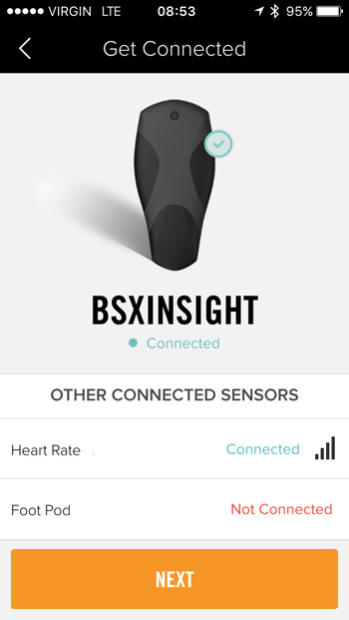
Also, the updated BSX app now allows user to know what device is paired with the BSX Insight, with the addition of a naming feature when external sensors are first connected. This is important for those with a Kickr and power meter, as the Kickr needs to be paired to the BSX device if you wish to the BSX Insight to control the Kickr during lactate tests. As with the Gen 1 model, users can only pair one power meter at a time to the BSX device.
Next, the Gen 2 model includes pairing with Ant+ foot pods. The foot pod will support the daily use of the BSX Insight during running; however it is not yet a feature in the endurance test although pairing is still available.
Daily Use
The lack of the ability for daily use with the Gen 1 model seemed to get a lot of discussion, especially when it was compared to the Moxy device. The Gen 2 comes ready for daily use.
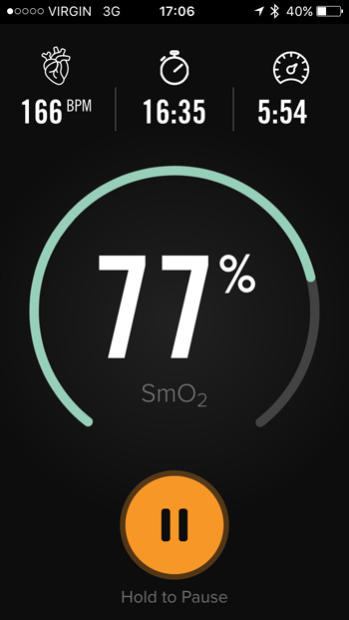
The daily use feature measures SmO2 (muscle oxygenation) along with any sensors you may have paired (e.g. power, HR). Users will be able to compare workouts to see changes in effort/fitness based on SmO2. Below is an image of two similar bike rides with two different efforts. As you can see, the ride on October 20th was a greater effort and it shows with lower SmO2 readings. Presently, real-time SmO2 is being used to better understand effort and recovery time between intervals. As more athletes, coaches, and physiologists have access to this data, I expect the understanding of its uses will continue to evolve.
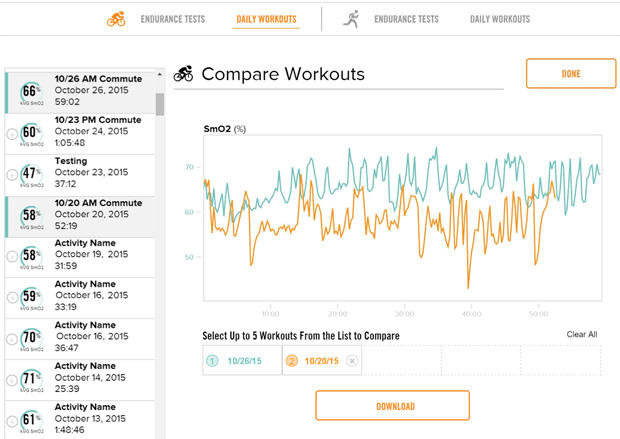
3rd Party Devices/Software Platforms
BSX also updated their software platform and mobile app (iOS only). Their software platform allows for comparisons of workouts through their updated dashboard, along with results of your lactate tests and the recommended training zones. Although the platform is rather basic for analysis, BSX recognizes its purpose is more to allow for basic analysis until dedicated programs (e.g. TrainingPeaks) have the ability.
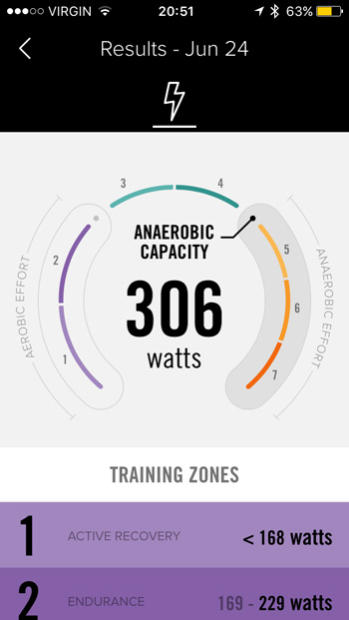
The mobile app has a number of minor updates that certainly improve appearances and also some feature updates. The BSX app allows users to select a daily workout or endurance tests, as well as see the results of either at the end of a workout. During a daily workout, users can monitor HR or power and real time SmO2 data on their mobile device.
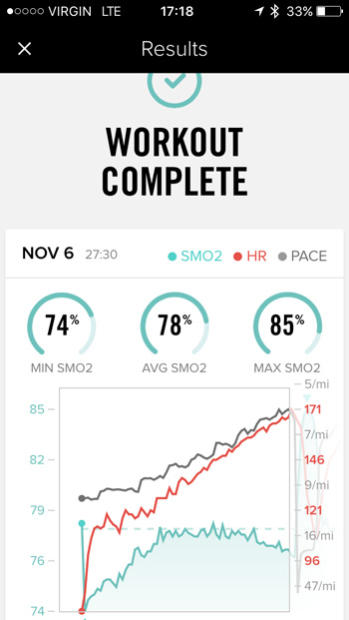
I detected only a minor bug in the app where an external device could be disconnected (e.g. heart rate monitor) but the user would not be aware as a value would remain showing at the last value recorded. BSX was aware of this and they expect it to be corrected in their next update.
Final notes
Along with the numerous updates/improvements they have made with the Gen 2 model, they have also started to address the question, “How can BSX users best leverage our devices?” Co-Founder Dustin Freckleton has been working with experts such as Hunter Allen, Dr. Andrew Coggan, and Dr. Stephen Seiler to better understand how SmO2 relates to effort/efficiency and how to leverage devices such as the BSX Insight to improve performance. The involvement of Coggan and Allen may also signal a future update to WKO 4 to include SmO2.
Also, since BSX is opening up their data, this should lead to other companies supporting the data/training zones obtained from BSX in a similar fashion as some companies have for the Moxy device. Garmin watches already support Moxy devices via their Connect IQ and SportsTracks recently updated their software to support Moxy. BSX did confirm that talks have taken place with Garmin, so I expect to see updates to certain Garmin devices to support SmO2 readings in the near future. Also, once this feature is in place, users will not need to carry their mobile device during daily use as the data will be broadcast to their watch via Ant+.
BSX has a number of other smaller updates they are examining including the addition of an audible stage countdown timer for the running lactate test and a battery life indicator for the BSX Insight on the mobile app (it is already in place on the computer software).
The pricing for the Gen 2 models will also remain the same as the initial prices for the Gen 1 model ($419 for the multisport edition). Those who purchased the Gen 1 model can upgrade for $79.00. The November 2nd rollout of the Gen 2 model also marks the end of the Gen 1 model.
Overall, BSX clearly listened to consumer feedback from their Gen 1 device with the rollout of the Gen 2 model. Also, once BSX is fully integrated with analytical software platforms, watches and bike computers, and assuming the longevity of the product for daily use, it should have a drastic effect on the Moxy as it delivers the same data and more for nearly half the price. I expect to see quite a few BSX Gen 2 models under the Christmas tree this year.


